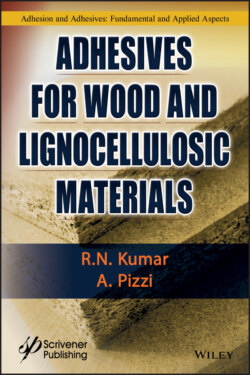Читать книгу Adhesives for Wood and Lignocellulosic Materials - R. N. Kumar - Страница 21
1.4.1 Cellulose
ОглавлениеCellulose is the most abundant biopolymer on earth. It is synthesized in plants (trees, grass, etc.), algae (Valonia, Cladophora, etc.), and even in some animals (tunicates), and it can also be synthesized by some bacteria (Acetobacter xylinum). Around 40% of the dry weight of wood consists of cellulose. Cellulose is a linear polymer built up of D-anhydroglucose units linked together by β-(1-4)-glycosidic bonds. The degree of polymerization (DP) is normally 9000–10,000 glucose units, but DP values as high as 15,000 glucose units have been reported [18]. Most of the cellulose found in wood fibers has approximately the same molecular size, i.e., a very low polydispersity [18].
The cellulose molecule is linear and it is therefore capable of forming strong intra- and intermolecular hydrogen bonds and aggregated bundles of molecules. In the literature, these bundles of cellulose molecules, as has been already mentioned, have been given many different names such as elementary fibrils, microfibrils, protofibrils, etc. [12–14]. The term cellulose microfibrils will be used in this book. These cellulose microfibrils have crystalline and amorphous regions.
